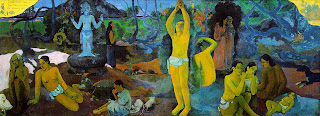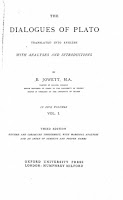Again too, within each of our conversations with who ever that might be, have been the catalyst for writing and giving thought forward to my further gathering of information. So thanks to every one that took time to discuss or exchange ideas.
In a nutshell, what Karim showed was that each time a memory is used, it has to be restored as a new memory in order to be accessible later. The old memory is either not there or is inaccessible. In short, your memory about something is only as good as your last memory about it. Joseph LeDoux
I am not as old as those of sixty, but I have a similar problem that if I do not use it, I tend to loose it.
Psychological mindedness
Psychological Mindedness (PM) is a concept which refers to an individual's capacity for self-examination, self-observation, introspection and personal insight.[citation needed] It also includes an ability to recognize and see the links between current problems within self and with others, and the ability to insight one's past particularly for its impact on present attitudes and functioning. Psychologically minded people have average and above average intelligence and generally have some insight into their problems even before they enter therapy. Psychological mindedness is distinct from intellectualism and obsessional rumination about one's inner problems. The latter is of no help in psychotherapy, but it is a sign of resistance.
Since we can be creatures of habit, it seems to me that neurological pathways are highways so to speak, and not traveling these roads, names of towns can slip our mind. "Waking up by traveling similar journeys" do tend to re-ignited those same neurological pathways. Having a strokes and damaging areas of the brain means that in order to ignite processes in our body expressions means to try and ignited those same pathways that were used.
By correspondence, we see correlations to our own lives. Looking at something and orientating the mind to see angles of something, is to me much like looking deep within the functioning of society to see what lies at the "bedrock or infrastructure" of the supporting objects of perception.
This is where something vaguely familiar eggs the conscious mind to look harder into the reservoir of our own histories. Brings those memories back to the surface.
The Spotless Mind
 Psychology professor Karim Nader is helping sufferers of post-traumatic stress disorder lessen debilitating symptoms—and in some cases, regain a normal life.Owen Egan See also: The Trauma Tamer
Psychology professor Karim Nader is helping sufferers of post-traumatic stress disorder lessen debilitating symptoms—and in some cases, regain a normal life.Owen Egan See also: The Trauma TamerIC: Why is this research so important?
Karim Nader: There are a lot of implications. All psychopathological disorders, such as PTSD, epilepsy, obsessive compulsive disorders, or addiction—all these things have to do with your brain getting rewired in a way that is malfunctioning. Theoretically, we may be able to treat a lot of these psychopathologies. If you could block the re-storage of the circuit that causes the obsessive compulsion, then you might be able to reset a person to a level where they aren’t so obsessive. Or perhaps you can reset the circuit that has undergone epilepsy repeatedly so that you can increase the threshold for seizures. And there is some killer data showing that it’s possible to block the reconsolidation of drug cravings.
The other reason why I think it is so striking is that it is so contrary to what has been the accepted view of memory for so long in the mainstream. My research caused everybody in the field to stop, turn around and go, “Whoa, where’d that come from?” Nobody’s really working on this issue, and the only reason I came up with this is because I wasn’t trained in memory. [Nader was originally researching fear.] It really caused a fundamental reconceptualization of a very basic and dogmatic field in neuroscience, which is very exciting. It is the first time in 100 years that people are starting to come up with new models of memory at the physiological level.
Anomaly and the Emergence of Scientific Discoveries Kuhn now moves past his initial topic of paradigm to scientific discovery saying that in order for there to be a discovery, an anomaly must be detected within the field of study. He discusses several different studies and points out the anomaly that invoked the scientific discovery. Later in the chapter he begins to discuss how the anomaly can be incorporated into the discovery to satisfy the scientific community.
There are three different characteristics of all discoveries from which new sorts of phenomena emerge. These three characteristics are proven through an experiment dealing with a deck of cards. The deck consisted of anomalous cards (e.g. the red six of spades shown on the previous page) mixed in with regular cards. These cards were held up in front of students who were asked to call out the card they saw, and in most cases the anomaly was not detected.
There are three different characteristics of all discoveries from which new sorts of phenomena emerge. These three characteristics are proven through an experiment dealing with a deck of cards. The deck consisted of anomalous cards (e.g. the red six of spades shown on the previous page) mixed in with regular cards. These cards were held up in front of students who were asked to call out the card they saw, and in most cases the anomaly was not detected.
For certain when composing articles in blogging format your trying to build off of previous information. You gather information so providing links is a way, much like connecting neurons to what was written before. Doing search functions for what is relevant to a topic in Google, or as a mean to use these search functions to help memory point to correlations.
Betrayal of Images" by Rene Magritte. 1929 painting on which is written "This is not a Pipe"
Looking at things from different angles is much like an artist who grabs onto an idea and furnishes us with a expose' into the idea of attention with further presentations visually. It is about seeing the idea manifest toward some kind of reality that is dare to say abstract in it's extrapolations, much as math is used to describe an aspect of nature.
Salvador Dalí (Spanish, 1904-1989). Crucifixion (Corpus Hypercubicus), 1953–54. Oil on canvas. 77 x 49 in. (195.6 x 124.5 cm). Gift of the Chester Dale Collection, 1955 (55.5). The Metropolitan Museum of Art, New York.
© Salvador Dalí, Gala-Salvador Dalí Foundation / Artists Rights Society (ARS), New York So in a way, while we seem to see true representations "about the fundamental ideas" these manifest toward physical manifestation. These ideas "are covered by abstractions." Much like experience in our daily lives. Sorting through the memory is like sorting through the experience. Recall then becomes something of a challenge when we seek to better understand how we have become who are.
Waking up means to become aware at what resides at the basis of our experiences in society, and how these have manifested in our daily dealings within that society.
As simple as possible then in mathematical interpretation. You see?
***
In geometry, the tesseract, or hypercube, is a regular convex polychoron with eight cubical cells. It can be thought of as a 4-dimensional analogue of the cube. Roughly speaking, the tesseract is to the cube as the cube is to the square.
Generalizations of the cube to dimensions greater than three are called hypercubes or measure polytopes. This article focuses on the 4D hypercube, the tesseract.
Penrose's Influence on EscherDuring the later half of the 1950’s, Maurits Cornelius Escher received a letter from Lionel and Roger Penrose. This letter consisted of a report by the father and son team that focused on impossible figures. By this time, Escher had begun exploring impossible worlds. He had recently produced the lithograph Belvedere based on the “rib-cube,” an impossible cuboid named by Escher (Teuber 161). However, the letter by the Penroses, which would later appear in the British Journal of Psychology, enlightened Escher to two new impossible objects; the Penrose triangle and the Penrose stairs. With these figures, Escher went on to create further impossible worlds that break the laws of three-dimensional space, mystify one’s mind, and give a window to the artist heart.
See:Penroses Influence on Escher





















